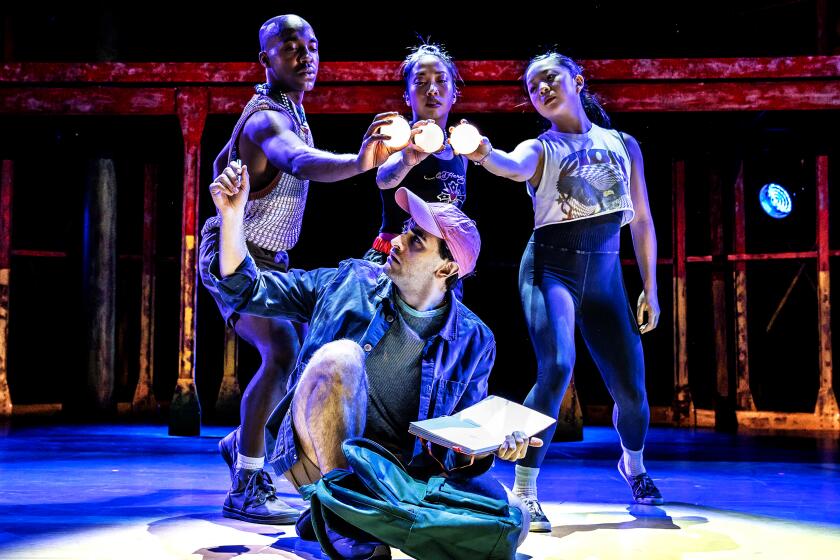Thankfully, Schiff remains on stage
A medical emergency interrupted pianist Andras Schiff’s recital Wednesday at Walt Disney Concert Hall. A woman sitting in the seventh row from the stage lost consciousness and, when she apparently could not be revived, was carried out on a stretcher.
Noticing the commotion, Schiff paused and said shyly that perhaps he should leave the stage. Philharmonic President Deborah Borda then came on to explain the events to the audience.
It was quite different from Schiff’s recital in the hall a year ago, when he reportedly stormed offstage after audience noise -- including a dropped cane that clattered down the balcony stairs -- intruded on his playing of a Mozart sonata.
Perhaps remembering that event or simply respecting Schiff and his program, the near-capacity audience Wednesday otherwise paid rapt attention as he embarked on a chronological survey of Beethoven’s 32 sonatas that is scheduled over the next two years at Disney Hall. He played the first four sonatas in this installment and will continue with the next four Wednesday. (He also will perform the second four at the Lobero Theater in Santa Barbara tonight.)
Anyone playing these works in order (they cover a 30-year period) is challenged to find the right balance between looking forward and looking back. In the beginning, Beethoven did not yet know what quantum leaps he was to take. But later listeners do. They also know the interpretations of such masters as the poetic Artur Schnabel, the spiritual Wilhelm Kempff and the spontaneous Daniel Barenboim.
Schiff seemed to opt for looking forward, imparting a sense of mastery, discovery and exploration rather than injecting revolutionary and Romantic fervor into the works. In program notes reproduced from the first disc in his ECM New Series recording of the cycle he talked about the importance of finding the right meaning in every note. His playing reflected that conscientiousness, but at least one listener found it occasionally too narrowly focused, lean and dry.
Thus he emphasized the formal elements of the first two sonatas, differing in character as they do (tense in the F-sharp minor; witty in the A major). He took all the repeats, stressed the propulsive elements, phrased in compact units and kept dynamics and thematic contrasts within narrow limits. (It was after the first movement of the Second Sonata that the woman in the audience fell unconscious.)
In the Third Sonata, the last of the three dedicated to his teacher, Haydn, Beethoven allowed himself to be more openly virtuosic, with concerto-like cadenzas at the end of the first movement. Schiff, too, expanded his boundaries of dynamic and thematic contrasts, but not by much.
In the Fourth Sonata, Schiff was even more lyrical and dramatic, especially in the deep bass power notes and abrupt, gruff mood changes. Yet there was an unexpected decorum to it all.
Schiff was always masterly in his precision, clarity and virtuosic ease, and the audience responded with delirium after each work. For all that, there was an emotional reticence that kept the music at a distance.
Perhaps as he moves to the expressivity of the “Pathetique” (next week), Schiff will reveal the deeper emotional insights that make his Mozart interpretations so astonishing.
He played the first of Schubert’s Drei Klavierstucke (Three Piano Pieces), D. 946, the one in E-flat minor, as an encore. On Thursday morning, a Philharmonic spokesman said the ailing audience member’s health had returned to normal.
chris.pasles@latimes.com
More to Read
The biggest entertainment stories
Get our big stories about Hollywood, film, television, music, arts, culture and more right in your inbox as soon as they publish.
You may occasionally receive promotional content from the Los Angeles Times.





